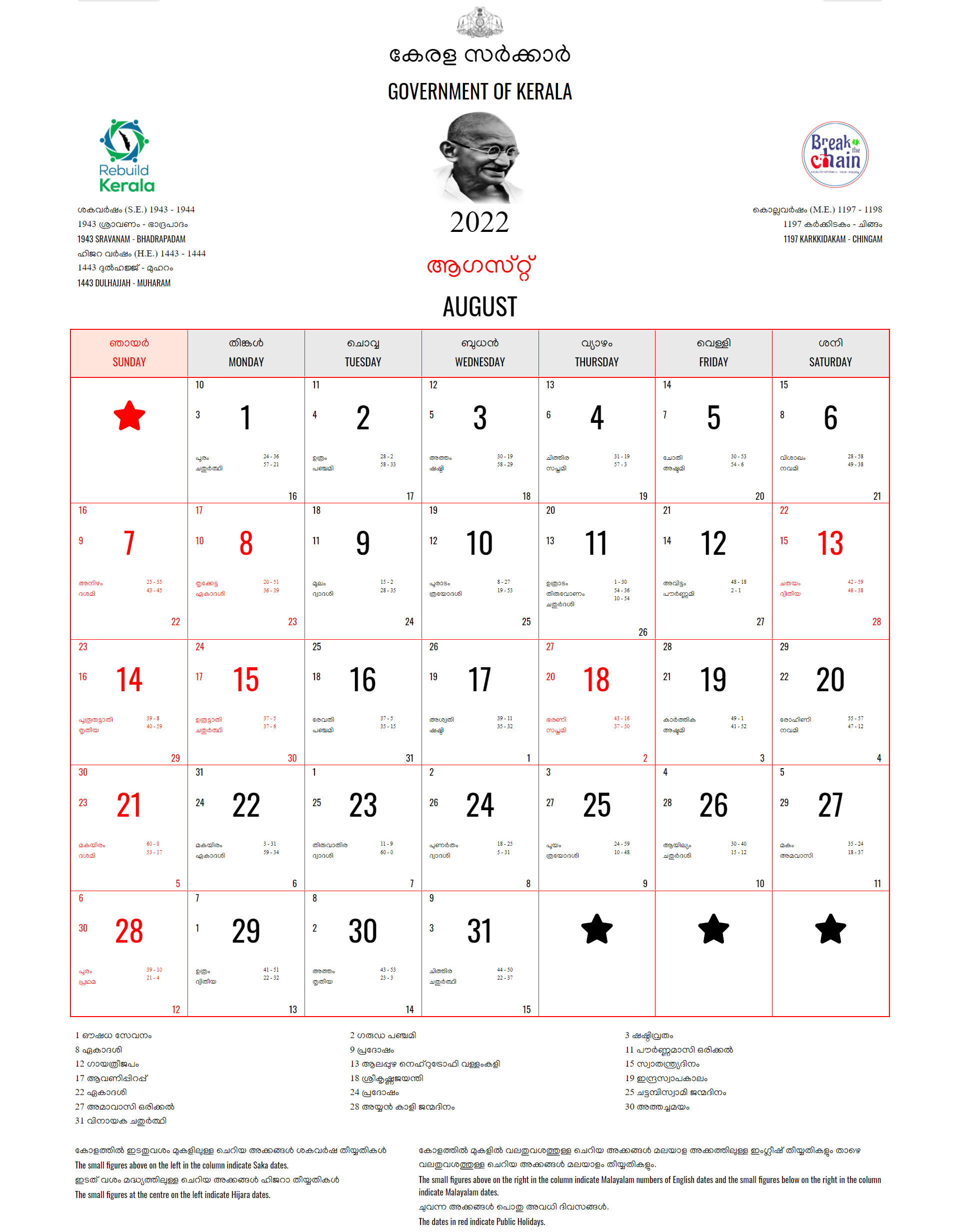Is navigating the complexities of the year ahead a source of both curiosity and concern for you? Understanding the Malayalam Calendar 2025, a vital tool for millions, offers a key to unlocking the rhythms of time, culture, and tradition that shape life in Kerala and beyond.
The Malayalam Calendar, deeply interwoven with the cultural fabric of Kerala, goes far beyond mere date-keeping. It acts as a roadmap for navigating the year, meticulously charting festivals, auspicious days, and significant cultural events. For those who observe it, the calendar is more than a practical tool; it's a connection to heritage and a constant reminder of the cyclical nature of life. The year 2025, as reflected in the Malayalam calendar, promises to be a dynamic period filled with its own unique blend of celebrations, observances, and everyday moments.
The beginning of the Malayalam month of Makaram on January 14, 2025, marks a significant point in the year. The calendar, often referred to as the Kollavarsham, provides a different perspective on the passage of time compared to the Gregorian calendar. It's not merely a parallel system, but a distinct cultural artifact, offering a unique lens through which to view the world.
Understanding the nuances of the Malayalam calendar is essential for anyone with an interest in Kerala's culture. From the dates of Onam and Vishu, the major festivals that punctuate the year with joy and color, to the observance of auspicious days for weddings and other ceremonies, the calendar dictates the flow of life. Beyond the immediate calendar dates, the Malayalam calendar provides a wealth of information, including details about Nakshatrams (lunar mansions), Tithis (lunar days), and other astrological information, each having significance within the cultural context.
Many people find the calendar particularly useful in planning. Whether it is to schedule important appointments, manage business operations, or simply to stay informed about the coming festivals, the Malayalam calendar is essential. The availability of the calendar in multiple formats—both physical and digital—underscores its importance in contemporary life. Many websites and applications offer Malayalam calendars, making it accessible to a wide audience, ensuring that this ancient tradition continues to thrive even in the digital age.
The digital age also plays a huge role in accessibility. You can find the Malayalam Calendar in various formats like pdf and many online platforms offer detailed information. Digital calendars now offer downloadable formats, enabling people to print them or have them available on their mobile devices. This ease of access ensures that the knowledge of the calendar is retained in the modern world.
Here is some additional information, that will help you to navigate the Malayalam Calendar for the year 2025.
| Feature | Description |
|---|---|
| Monthly Calendars | The Malayalam calendar is organized into monthly calendars, each providing a detailed view of the month’s events. |
| Festivals and Holidays | The calendar clearly marks all the festivals, both regional and national, as well as public holidays. |
| Nakshatrams and Tithis | Information on the Nakshatrams (lunar mansions) and Tithis (lunar days) is usually provided, offering astrological insights. |
| Downloadable PDFs | Most websites offer a downloadable PDF format of the calendar, making it easy for users to save and print the calendar. |
| Online Availability | Several online platforms provide interactive calendars, allowing users to view the calendar on their computers, tablets, or smartphones. |
| Month Start Date | Makaram typically begins around January 14th in the Gregorian calendar. |
As you begin to consult the Malayalam calendar for 2025, you’ll find it a guide that illuminates more than just dates. It illuminates a way of life, steeped in history and tradition. Whether you are a resident of Kerala or simply someone interested in understanding another culture, the calendar provides invaluable insights.
For those planning ahead, January 2025 is particularly important, as it marks the start of the Malayalam month of Makaram. The calendar helps in planning events and activities. You can find specific dates for festivals, important days, and other significant events. This helps in aligning personal and professional schedules with the cultural and religious observances of the year.
The accessibility of the calendar in PDF format is useful, allowing for easy printing and sharing. Digital versions also offer features such as the ability to highlight events and add notes, providing a customized experience. They also include links to additional information to assist in making the most of the calendar.
Many sources provide the information needed. One such is the Malayalam Calendar January 2025 or മലയാളം കലണ്ടർ ജനുവരി 2025. These are available on many online platforms, and offer complete lists of holidays, festivals, and important days. They often include details about bank holidays, the birth Nakshatra, and festivals within the area. Additionally, they can be downloaded, as well.
The Malayalam calendar provides the information. Whether for individual use or business management, the calendar facilitates scheduling of everyday tasks, major celebrations, and anything in between. From important dates to specific Muhurat (auspicious times) for various activities, the calendar acts as an essential reference.
For those seeking to deepen their understanding of Kerala’s cultural and social landscape, the Malayalam calendar is a cornerstone. It is a blend of practical utility and cultural significance, making it a must-have tool for anyone. Whether you're looking to celebrate a festival, schedule an important meeting, or learn more about the rhythms of life in Kerala, the Malayalam calendar 2025 is a valuable resource.
The Malayalam calendar for the year 2025 offers a unique window into the cultural heritage of Kerala and the broader Indian subcontinent. With its comprehensive details, accessible formats, and integration with modern technology, it ensures that the traditions and customs of the past continue to be relevant today.


